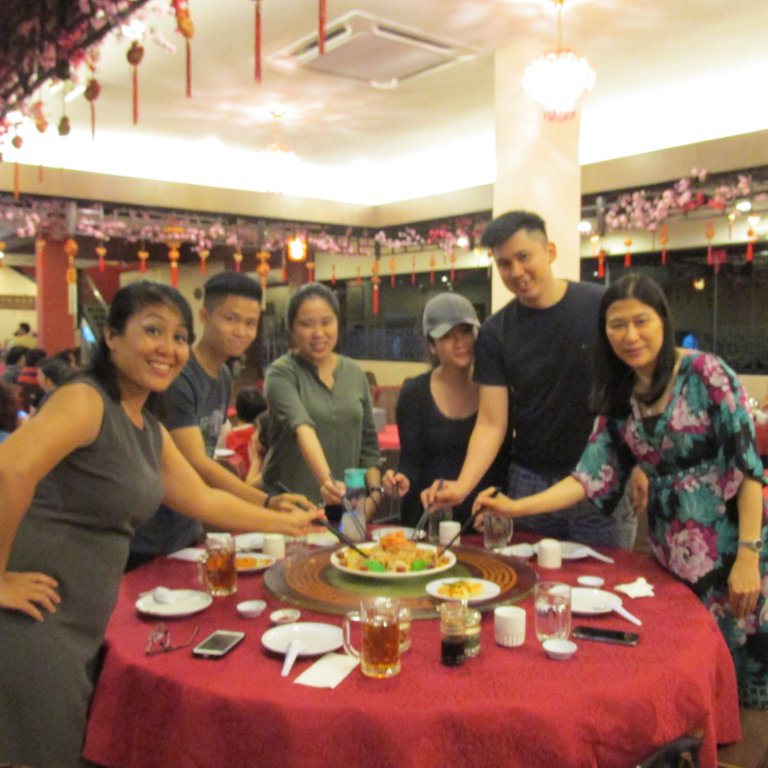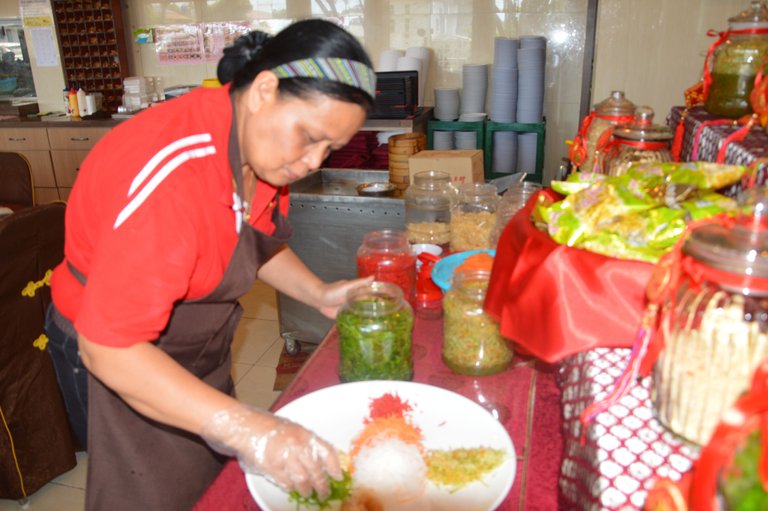Food is an essential thing in order to live. It has played important role in people’s life whether it is consumed for survival, fitness, health, celebration or simply to fill the hungry stomach.
Come festivity like Chinese New Year, food is usually the first item people would think of to prepare prior to the coming merriment.
In today’s digital era, food too has evolved over time. Things (food) that were found fifty years ago may not be available today. However, as for some Chinese family, dishes (recipe) handed down from the earlier generation are still intact and preserved as family heirloom, where it would be only available during special occasion like Chinese New Year.
Wong Oi Yee, 25, who manages her family restaurant business shared that recipe handed down from her ancestors still very much being used in their kitchen today.
“My late grandfather was a person who upheld tradition with pride. Despite having lived in the modern world, he still insisted the family to prepare dishes that had been around for decades in the family dining table. She said the Yee Sang recipe was handed down from his grandfather and till today it is still being used. However, only a few items (ingredients) were added in to suit the local taste.
She explained that Yee Sang (food in a big tray) was invented in Singapore and Malaysia some years ago, where variety of little ingredients with different taste grouped together in a big tray and the whole family members would use chopstick to stir the whole ingredient. This particular ‘event’ usually takes place during the eve of Chinese New Year where family members from far and near come together for the reunion dinner. He said that big tray is dubbed as ‘Tray of Togetherness”.
“It has become a tradition for us to have the Yee Sang on the eve of the festival. As we toss the food (Yee Sang) with our chopstick, we would say some words like ‘let the good fortune come to our life: let there be luck in the business: let us be healthy whole year through or something like that and tossing it as high as we can,” said Kong You Teck, captain in the restaurant based in Luyang.
Kong had worked for the restaurant for the past 5 years shared that every year they must prepare the ingredients for the Yee Sang at least two weeks before the big celebration. They knew that many corporations, associations and companies would come to their restaurant to celebrate with their staff.
“It is a way for them to say ‘thank you’ to their staff by giving or sharing meal with them and Yee Sang is a must-to-do item,” shared Kong.
Apart from the variety of tastes in the Yee Sang tray, there are also different colours in each small portion of the ingredients which carry meaning.
“Red is a very important colour in our celebration. It means luck. Everyone wants luck in their life. So, when come Chinese New Year, we call for luck as we do the merry-making with our family and friends by wearing red dress, red shirts and decorate our house with red things,” said Oi Yee.
She further said yellow represents gold and fortune. She said in the olden days, gold was what people of yore sought-after. So, in the Yee Sang menu, crackers is one of the ingredients as its colour is close to gold.
Green is progressing throughout the year. She said nobody wants to have business where it doesn’t bring progressive income. She said in every menu including Yee Sang, there must always be green in the ingredients.
Apart from the usual ingredients for Yee Sang, sauces used are such as sesame seeds oil, peanuts crunch, and soy sauce.
“We have one special sauce invented by our Chef and it is the plum sauce combined with other ingredients. It is a must use sauce in the Yee Sang apart from the other sauces such as oil, soy sauce and others. They basically give good taste to the ingredients in the Yee Sang tray, so that it becomes even nicer to sample (after the tossing),” she quipped.
Her grandfather, the late Datuk Wong Kwok was very particular about food that was served during eve as well as on the Chinese New Year period. The late Wong Kwok’s family came from Canton, China who still keep the tradition alive in terms of food preparation.
“My late grandfather was a man of tradition. Everything must follow what he had practised long ago. Even the food, he made sure it was exactly like how he had it in his younger days. We even name the dishes according to its look, taste, and how it is called in Cantonese,” she said with excitement.
In their restaurants, the most popular dishes are named after something that make one’s feel good.
“For example, this coming Chinese New Year we prepare menu called ‘Wealth’ dishes and it is a combination of braised Chinese cabbage with Fatt Choi (black moss) and sea cucumber in soup.
In Cantonese, Fat Choi means growth in business and fortune. This dish represents prosperity and wealth. Therefore, it is a must-have menu in the celebration,” she said.
Another dish is ‘Happiness” dish which comprises of fried prawn with salad and peach. She said in Cantonese prawn is pronounced as ‘Ha’ meaning happiness and laughter. The dish symbolises happiness in celebrating the occasion with family members.
“Peace through generation” menu is a combination of fried rice wrapped with mean in lotus leaf.
“The fried rice is wrapped with lotus leaf and it looks like a bag and steamed it. In Cantonese the bag of wrapped rice is called ‘Dai’ meaning a wish of peace throughout the generation.
“Unity” menu is a traditional dessert comprises of yam and sweet potato served in ginger soup. We call it ‘Tang Yuen” and it means a symbol of togetherness, strong family bond and always united,” explained Oi Yee proudly.
As for her restaurant, workers would be busy from two weeks prior to the festival. They would get the ingredients for Yee Sang as they would receive pre-booked luncheon meet of dinner from companies or association to do their gatherings or reunion for the company staff.
“It is really fun and pleasing to see our customers gather all their staff for meal. This is the usual practice where everyone comes together tossing the Yee Sang before they start having their lunch or dinner.
The significance of the toss means abundance in anything good, prosperity and all good things to come to our way. The higher you do the tossing, the better things and fortune will come your way,” she laughed.
She admitted that over the years, somehow, some of the menu including Yee Sang had some changes in terms of ingredients usage.
“In our Yee Sang, we try to keep it as healthy as possible by including some fruits such as pear, longans, coconut to name a few. Well, it is still traditional Yee Sang however, we just add a few items which is good for health,” she said.
She said in both her restaurants, one in Penampang and another in Luyang area, each has Chef who are experienced in preparing dishes.
“Although some of our dishes evolved as the time goes by, we still preserve some traditional ones. We know that our repeat customers come to patronize our restaurant because we still serve the traditional menu. It’s kind of a nostalgic feeling when you still coul sample food which existed during our grandfather’s era,” bragged Oi Yee.
hef Liu Soon Yoong had worked in the restaurant hd received many awards of recognition due to his expertise in designing food menu.
Chef Liu is originally from KL but had lived in Sabah for the past 20 years, said he had made some achievements internationally in his career as a chef.
“In 2014 I joined a competition in Hong Kong and won in some categories in Lee Kum Kee International Young Chef for Chinese Culinary Challenge,” said Liu, who also shared that he won some award in Taiwan for the similar competition.
Another two chefs who worked hard in preserving traditional menu as well as re-designing new menu are Chef Walter Keoh who is based in Penampang restaurant and Sous Chef is Ng Vui Siong.
Oi Yee also shared that a lot of Chinese proverbs are being used to name certain occasion in Chinese celebration
“Nien Nien Yu Yee is a popular proverb during our festivity. It means abundance of everything good throughout the year.






